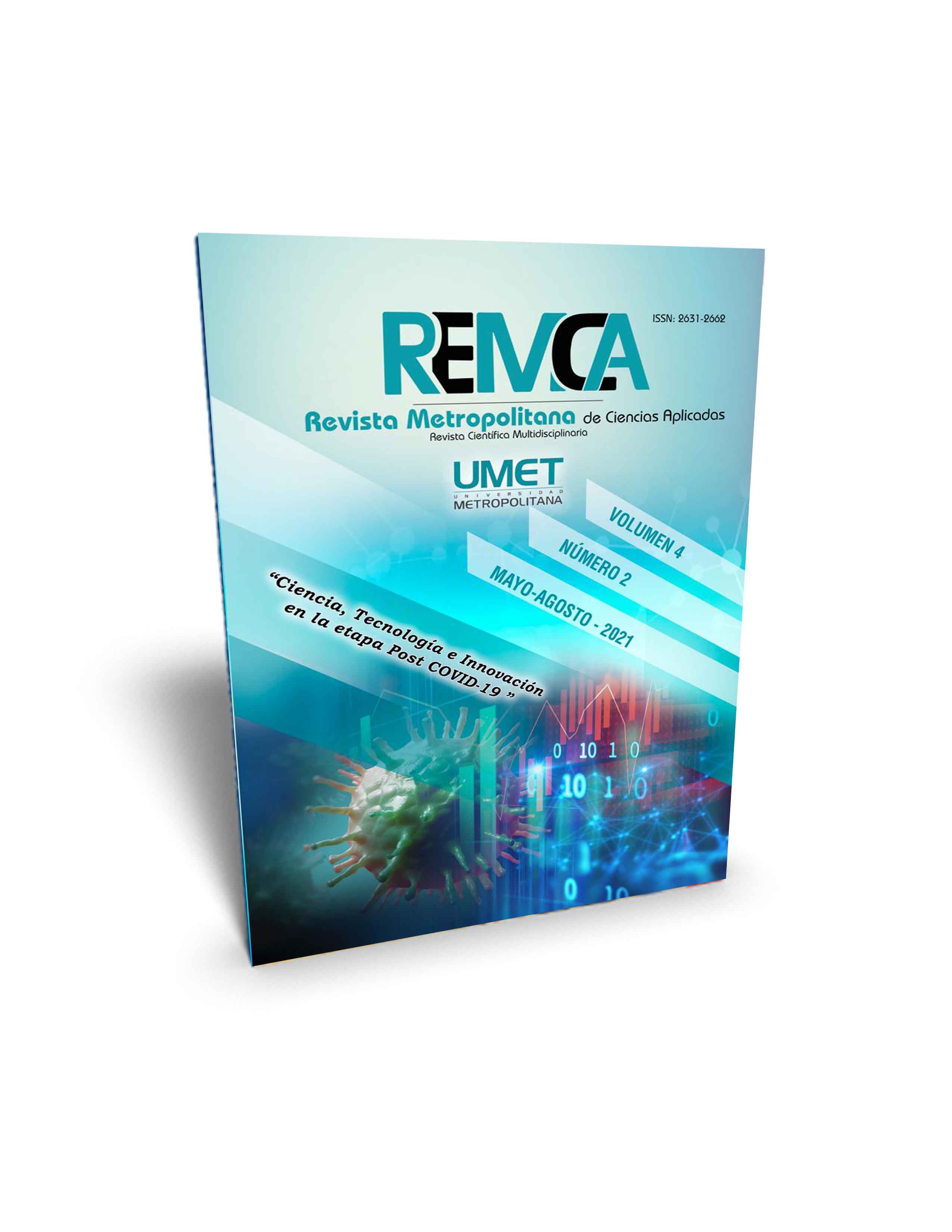Comparative analysis of the economic impact of cocoa cultivation in Ecuador in the first semester 2019 versus the first semester 2020
DOI:
https://doi.org/10.62452/veh4wj58Keywords:
Economic impact, export, imports, cocoa sector, variationsAbstract
The cultivation of cocoa is one of the most dynamic within the country's economy, in recent years cocoa has made a great contribution to the Gross Domestic Product, however, as a result of changes in the international market, different behaviors have been presented. In this sense, the objective of this work is to compare the economic impact of cocoa cultivation in Ecuador in the first half of 2019 versus the first half of 2020. A comparative and descriptive study was used, obtaining data from 2019 and 2020 on the economy and development social of cocoa. The results obtained were presented in 4 indicators: first, cocoa exports and imports by country, second; price of cocoa, third; economic block by region, fourth; monthly values. It is concluded that there are both positive and negative variations, and its flow of exports has not been affected by the pandemic, while imports had opposite reactions than exports, exposing a decrease due to the internal productive contraction of the Ecuadorian economy.
Downloads
References
Araúz, L. A. (2015). Certificaciones de comercio justo: Facilidad de su alcance por pequeños productores de cacao fino de aroma del cantón Quevedo de la provincia de los Ríos y beneficios en su productividad. (Trabajo de titulación). Pontificia Universidad Católica del Ecuador.
Argotti, K. (2020). Evaluación Socioeconómica PDNA Covid-19 Ecuador. https://www.planificacion.gob.ec/wp-content/uploads/downloads/2020/11/Eval-Soc-Econ-26-Oct-ok.pdf
Asociación Nacional de Exportadores. de Cacao e Industrializados del Ecuador. (2019). Sector Exportador de Cacao. ANECACAO.
Banco Central del Ecuador. (2020). Informacion económica. https://contenido.bce.fin.ec/docs.php?path=/documentos/PublicacionesNotas/Catalogo/IEMensual/Indices/m2018042020.htm
Bernal, M., & Miranda, F. (2019). Cacao el sabor dulce del Ecuador. El Productor, 30. https://elproductor.com/wp-content/uploads/2019/04/REVISTA%20MAYO%20CACAO.pdf
Comisión Económica para América Latina y el Caribe. (2013). Diagnóstico de la Cadena Productiva del Cacao en el Ecuador. CEPAL. https://docplayer.es/68113482-Diagnostico-de-la-cadena-productiva-del-cacao-en-el-ecuador.html
Ecuador. Instituto Nacional de Estadísticas y Censos. (2020). Encuesta Nacional de Empleo, Desempleo y Subempleo. INEC. https://www.ecuadorencifras.gob.ec/documentos/web-inec/EMPLEO/2020/ENEMDU_telefonica/Principales_Resultados_Mercado_Laboral.pdf.
Ecuador. Ministerio de Agricultura y Ganadería. (2016). AgroSeguro. MAGAP https://www.agricultura.gob.ec/agroseguro/.
Ecuador. Ministerio de Producción, Comercio Exterior, Inversiones y Pesca. (2020). Covid-19 en el Ecuador, Impacto Económico y Perspectivas. MPCEIP.
Ginatta, G., Vignati, F., & Rodríguez, M. (2020). Observatorio del Cacao Fino de Aroma para América Latina. Boletín, 9.
Guerrero, G. (2016). El cacao ecuatoriano su historia empezó antes del siglo XV. Revista Líderes. https://www.revistalideres.ec/lideres/cacao-ecuatoriano-historia-empezo-siglo.html
Henderson, T. (2017). La reestructuración de los sectores del café y el cacao en México y Ecuador. Control agroempresarial de la tierra y trabajo campesino. LiminaR, 15(1), 128-141.
Lazo, X. (2019). Ecuador busca duplicar la exportación de cacao al 2030. El Universo. https://www.eluniverso.com/noticias/2019/06/17/nota/7382016/ecuador-busca-duplicar-exportacion-cacao-2030-1500-millones-2030/
Plaza, M., Rodríguez, J., & Quijano, J. (2016). Estudios Industriales: Orientación estratégica para la toma de decisiones. ESPAE-ESPOL.
Ramos, T., Guevara, D., Sarduy, L., & Santana, K. (2020). Producción más limpia y ecoeficiente en el procesado del cacao: un caso de estudio en Ecuador. Investigación & Desarrollo, 20(1), 135-146.
Sanchéz, A., Vayas, T., Mayorga, F., & Freire, C. (2019). Sector Cacaotero Ecuatoriano. https://blogs.cedia.org.ec/obest/wp-content/uploads/sites/7/2020/07/An%C3%A1lisis-de-cacao-24-de-junio-2020-7.pdf
Vassallo, M. (2015). Diferenciación y agregado de valor en la cadena ecuatoriana del cacao. Editorial IAEN.
Vite Cevallos, H., Townsend Valencia, J., & Carvajal Romero, H. (2020). Big Data e Internet de las Cosas en la producción de banano orgánico. Universidad Y Sociedad, 12(4), 192-200.
Downloads
Published
Issue
Section
License
Copyright (c) 2021 Ornella Astrid Vargas Pérez, Harry Alexander Vite Cevallos, Jessica Maribel Quezada Campoverde (Autor/a)

This work is licensed under a Creative Commons Attribution-NonCommercial-ShareAlike 4.0 International License.
Authors who publish in Revista Metropolitana de Ciencias Aplicadas (REMCA), agree to the following terms:
1. Copyright
Authors retain unrestricted copyright to their work. Authors grant the journal the right of first publication. To this end, they assign the journal non-exclusive exploitation rights (reproduction, distribution, public communication, and transformation). Authors may enter into additional agreements for the non-exclusive distribution of the version of the work published in the journal, provided that acknowledgment of its initial publication in this journal is given.
© The authors.
2. License
The articles are published in the journal under the Creative Commons Attribution-NonCommercial-ShareAlike 4.0 International License (CC BY-NC-SA 4.0). The terms can be found at: https://creativecommons.org/licenses/by-nc-sa/4.0/deed.en
This license allows:
- Sharing: Copying and redistributing the material in any medium or format.
- Adapting: Remixing, transforming, and building upon the material.
Under the following terms:
- Attribution: You must give appropriate credit, provide a link to the license, and indicate if any changes were made. You may do this in any reasonable manner, but not in any way that suggests the licensor endorses or sponsors your use.
- NonCommercial: You may not use the material for commercial purposes.
- ShareAlike: If you remix, transform, or build upon the material, you must distribute your creation under the same license as the original work.
There are no additional restrictions. You may not apply legal terms or technological measures that legally restrict others from doing anything the license permits.




